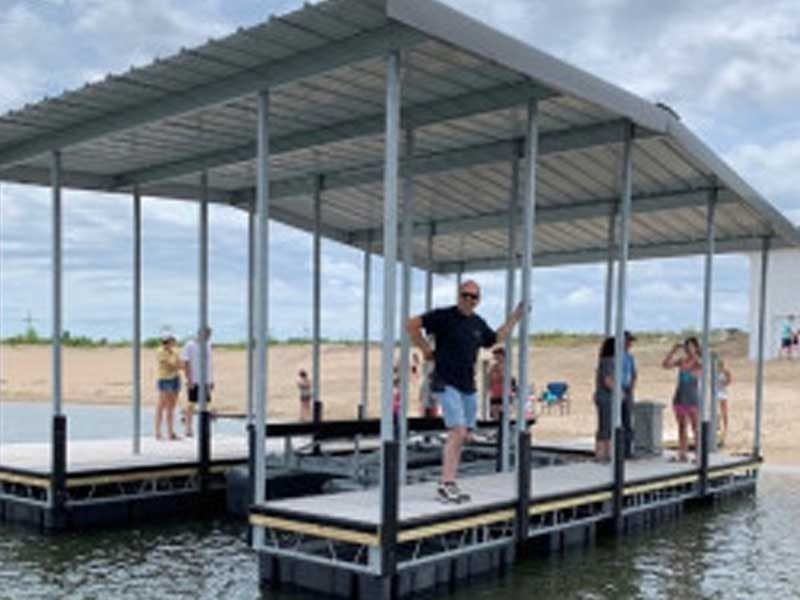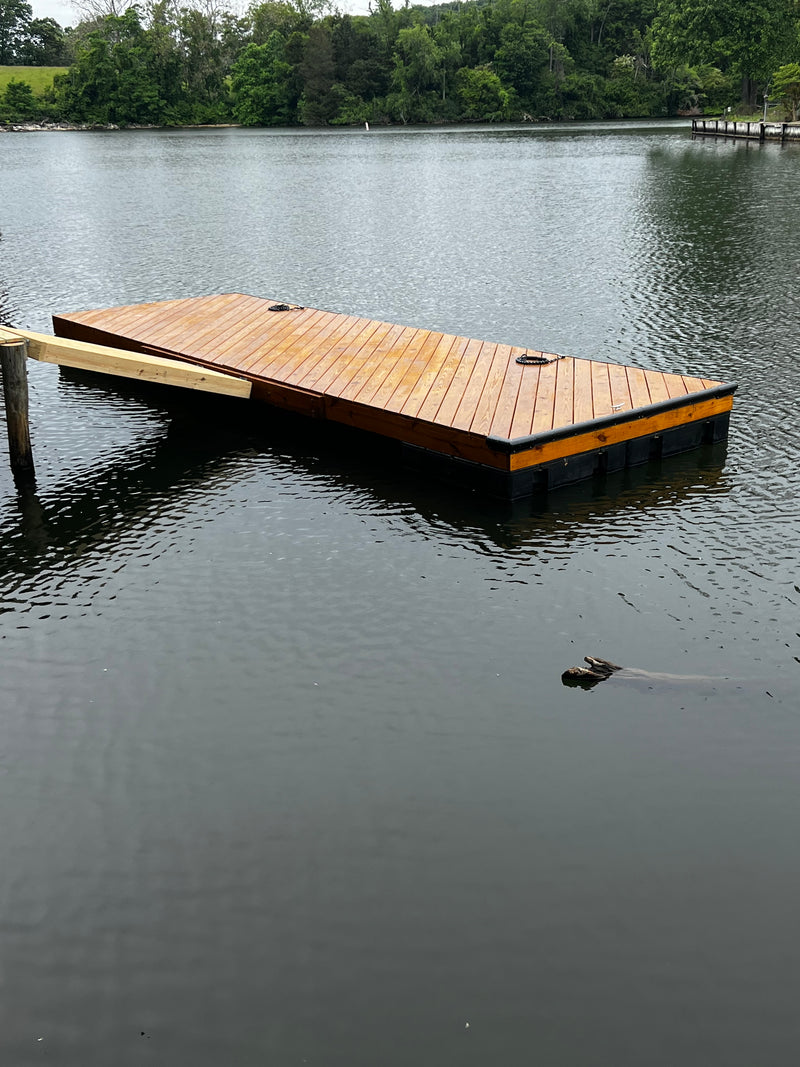The Ultimate Guide to Selecting the Finest Floating Docks
Choosing the optimal floating dock requires a thorough understanding of different elements that affect both efficiency and longevity. Elements such as dock types, materials, and important attributes dramatically affect your decision-making process.
Comprehending Floating Dock Types
When picking a floating dock, it is important to comprehend the various types readily available, as each offers unique objectives and applications. Floating docks largely fall under 3 classifications: modular, stationary, and pontoon docks.
Modular docks are composed of specific sections that can be quickly set up or reconfigured, making them optimal for altering water degrees and varied uses, such as entertainment activities or commercial operations. Their versatility enables customization based upon specific demands.

Pontoon docks are characterized by their buoyant structure, typically composed of multiple pontoons that supply security and support. They are especially appropriate for larger vessels and are generally made use of in marinas or for waterside residential or commercial properties. Recognizing these types aids in selecting the most ideal floating dock to satisfy specific needs, ensuring optimum performance and safety and security.
Secret Products for Toughness
Choosing the right products for floating docks dramatically influences their toughness and longevity. The most usual products consist of timber, plastic, metal, and composite materials, each offering unique advantages and constraints.
Wood, commonly preferred for its aesthetic appeal, requires routine maintenance to hold up against wetness and degeneration. Pressure-treated lumber can boost resistance to rot, but it might still be susceptible to pests and weathering.

Plastic docks, constructed from high-density polyethylene (HDPE), are resistant to rust, UV radiation, and influence, making them a prominent selection for coastal settings. Their lightweight nature additionally promotes simple installation and relocation.
Steel docks, usually created from aluminum or galvanized steel, give remarkable toughness and toughness. They are resistant to corrosion, especially when treated, yet may need added insulation to avoid heat build-up in hot climates.
Composite materials, integrating wood fibers and plastics, supply the advantages of both timber and plastic, resisting wetness and fading while requiring very little upkeep. - floating dock builder
Ultimately, the choice of products should line up with ecological problems, meant use, and upkeep choices to ensure the floating dock stays functional and cosmetically pleasing gradually.
Essential Features to Think About
While the selection of materials is crucial, taking into consideration important functions for floating docks is just as important to ensure optimal efficiency and individual contentment. One key function to evaluate is the dock's i was reading this buoyancy capability, which establishes just how much weight it can support without submerging. floating dock company. This is important for accommodating boats, individual watercraft, and also entertainment tasks
In addition, transportability is a considerable factor to consider. Depending upon your needs, you might want a dock that is easy to deliver and disassemble, particularly if you prepare to transfer it seasonally. Security is another crucial attribute; a well-designed floating dock ought to reduce activity brought on by wind and water currents, providing a secure platform for customers.
Safety attributes, such as non-slip surfaces and rounded edges, are likewise important to stop crashes, particularly in damp problems. Consider the schedule of accessories, such as cleats, ladders, and bumpers, which can enhance the capability of your dock.
Installment and Maintenance Tips
Setting up and maintaining a floating dock needs cautious planning and focus to detail to ensure its long life and optimum efficiency. Begin by picking a suitable area that lessens exposure to solid currents and waves, which can create damage. Make certain that the water deepness is adequate for the dock's height which it is secured safely to protect against motion.
Throughout installation, comply with the manufacturer's standards closely, as inappropriate setting up can jeopardize stability. Usage top quality materials resistant to corrosion, such as aluminum or dealt with wood, to improve longevity. Regularly check all parts, including drifts, ports, and anchoring systems, for indications of damage or wear.
Maintenance is important for extending the life of your dock. Tidy the surfaces regularly to stop algae build-up and check for any type of loosened fittings that may call for tightening. If your dock makes use of flotation devices, guarantee they continue to be intact and totally free from slits. Additionally, take into consideration applying protective coverings to wooden parts to decrease weathering impacts. By adhering to these setup and maintenance suggestions, you can appreciate a trustworthy and practical floating have a peek here dock for many years to come.
Budgeting for Your Dock
Budgeting for your dock is a crucial step that can dramatically impact your total complete satisfaction and financial investment in a waterside property. Developing a clear budget plan helps you browse the numerous choices offered and guarantees you make notified choices that straighten with your monetary abilities.
Begin by establishing the dimension and style of the dock you need, as these variables will considerably affect the expense. Floating docks can vary substantially in price, depending on materials, buoyancy, and functions like devices and ramps. Study different makers and suppliers to contrast costs and understand the marketplace value.
Along with preliminary costs, consider ongoing expenditures such as maintenance, insurance, and prospective repair work. Allocate funds for these reoccuring costs to stay clear of surprises down the line. It's likewise prudent to allocate any type of essential authorizations or assessments, which might be needed by regional policies.
Lastly, remember the prospective return on investment. A well-planned dock can boost your home's value and charm, giving a favorable monetary effect in the long term. By budgeting efficiently, you can make sure that your dock satisfies your requirements without jeopardizing your economic security.
Conclusion
In final thought, selecting the excellent floating dock necessitates a comprehensive assessment of hop over to these guys numerous aspects, including dock kinds, materials, crucial attributes, and installment processes. Cautious factor to consider of financial restrictions will additionally make sure an audio financial investment.

While the selection of products is critical, considering necessary attributes for floating docks is just as essential to make certain ideal efficiency and individual contentment.Setting up and maintaining a floating dock calls for careful planning and interest to information to ensure its long life and optimum efficiency. Floating docks can differ considerably in cost, depending on products, buoyancy, and features like ramps and accessories.In verdict, selecting the optimal floating dock necessitates a detailed analysis of various elements, consisting of dock kinds, materials, necessary features, and installment procedures.